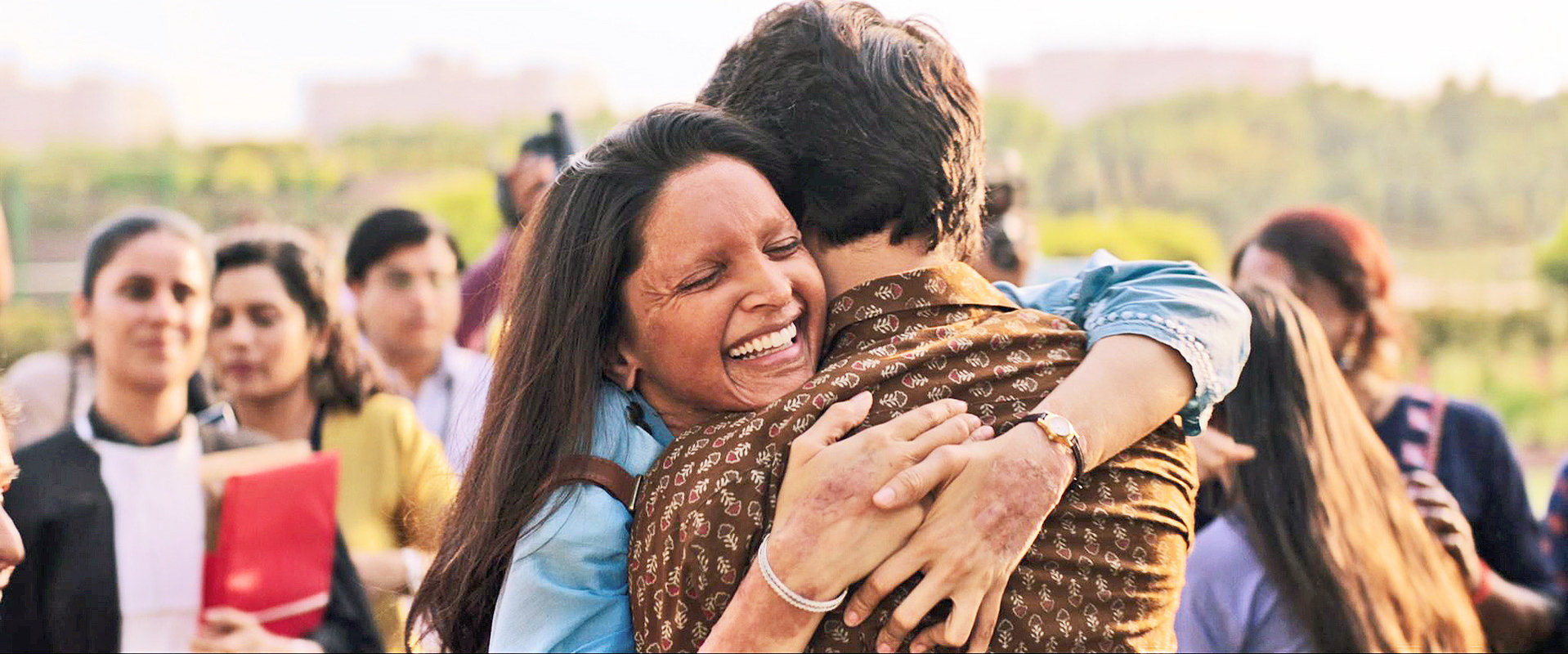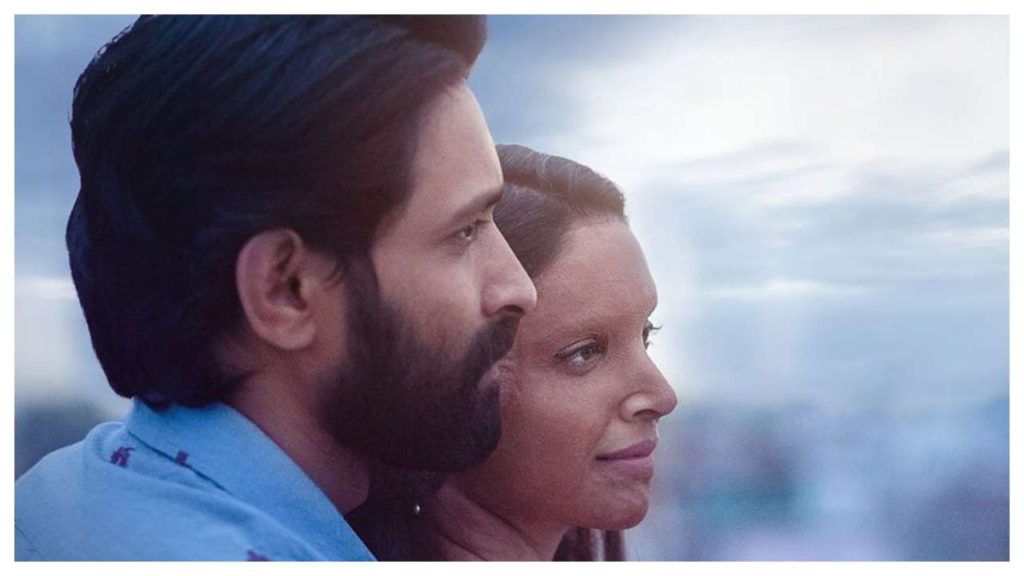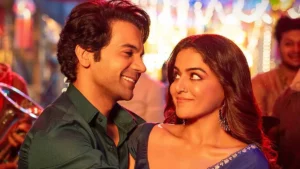
The new decade has just kicked off and it sets me thinking. How did the regular Hindi film heroine behave or appear at the beginning of the millennium? Their eyelashes fluttered, their flowing hair swayed in the direction of the wind, their makeup was compact and the danced like fairies. The most beautiful of them had large betel-leaf shaped eyes which widened impishly whenever their alpha male screen partners did something lightly amusing. Circa 2020, we get Chhapaak, the first film that is entirely driven by a woman – the biggest superstar of the industry today – Deepika Padukone. A looker by all means – Padukone’s Malti in the film has no eyelashes at all to flutter. She compensates that with her wavy hair who flows almost all the time. Malti’s skin meets no conventional beauty standards but the incandescence in Padukone’s smile remains. So yes, here’s the story of an acid attack survivor which Bollywood bravely puts together for the first time – dismantling the need for a pretty heroine. This Meghna Gulzar-directed film tells the film how men empowered by patriarchal ideas nip women and their dreams in the bud by throwing acid on them, which is an easily available OTC commodity.
Meghna’s film, interestingly, is not linear. Peppered with uneven flashbacks, the narrative structure does add a layer of freshness to Chhapaak although not entirely (more on that later). The film educates you on how emotionally aggravating the vile act of acid throwing is on a woman and her family. It delves comfortably into bumpy territories, briefly examining the social and societal standpoints with responsibility. Helping the proceedings considerably is a fine-tuned central act by Deepika Padukone who seems to embody the graveness of the tragedy to great effect. However, that alone does not make Chhapaak from soaring the heights it should ideally have.
The core conflict exists in the screenplay which is only partially exciting. Remember, the idea here about being involved in the incidents that the film brings forth and not about being convinced by them. Meghna Gulzar’s ability to convey the message is spot-on because Chhapaak leaves you deeply disturbed and angered. That said, the screenplay pattern is such that our interest levels dip every now and then. We want to accompany Malti in every move of hers but the film is not as involving as it wants. Adding to the woes is Shankar-Ehsaan-Loy’s loud, lacklustre songs which are such mood-killers in scenes that could have been stellar otherwise.
Chhapaak also does not flesh out some of its key supporting characters well, including those of the attacker, Basheer Shaikh (Vishal Dahiya), who is not given even a single line to utter for some reason. Not that him speaking would change the nature for the dastardly act but the way Chhapaak distances its antagonist and his family feels bizarre. There is even a tiny and eerie scene where Basheer’s burkha-clad mother approaches Malti’s brother with an invite to her evil son’s wedding. Why, may I ask, does it even exist in the film?
The screenplay design is such that the interval point leaves with a thought that Malti has already won the battle. There is less intrigue on how her journey is going to pan out in the upcoming acts. The narrative, anyhow, picks up soon after and the character’s journey to the finale is largely empowering if we exclude the syrupy flashback to Malti’s happy days. My issue with it was how it’s so conventionally set up. Padukone’s slow-motion walks with her beauty enhanced to great effect, those extra-enthusiastic giggles, the lovey-dovey school romance, the simplistic villain and so on. The idea is to take us to the crescendo of happiness and then push us to a deep trench of sorrow. While the writers’ intent is clear, I didn’t expect a Meghna Gulzar film to play so direct and safe.

All the anomalies aside, I loved how the film highlighted the social side of acid attack and how there are people relentlessly working towards the cause. Vikrant Massey as the journalist-turned-activist Amol is marvellous in every frame. This lovingly crafted character gleams, even more, when Malti tells him, “Aapko lagta hai acid ka hamla aap par hua hai. Hamla mujhpe hua hai, aur mujhe party karni hai,” Massey’s innate charm also works wonderfully in making Amol what he is. It is also heartening to see Meghna throwing in a tiny supporting character in the form of the lawyer’s husband (Anand Tiwari) in an attempt to project how a modern man ought to be.
DOP Malay Prakash’s work is fine unless he becomes obsessed with certain slow-motion techniques. Editor Nitin Baid’s frame selection skills are appreciable considering the subject even though the screenplay structure baffles his ability to maintain the interest levels throughout. Makeup and prosthetics are fantastic and is a mega improvement over last year’s Malayalam hit Uyare which, too, dealt with acid attack. On that note, comparisons are inevitable with the Parvathy starrer even though both films examine different aspects of the catastrophe. If Uyare existed more in the personal and professional sphere of the victim, Chhapaak has a strong activist vein to it. If Uyare projected the attacker with finer details, Chhapaak is cause-driven, optimistic and luckily devoid of idiotic plot devices.
As the film ends, Meghna Gulzar makes sure that you exit the cinema appalled. As a viewer, I did not know how to react to the final blow it came with. Will it change the scenario as far as acid sales are concerned? I am not sure. Will it allow fast-tracking of the existing cases and PILs? I wish it does. Aggravating and also emotion-charged, Chhapaak contains the kind of subject that needs to be attempted. The writing has its share of pitfalls but if we count the makers’ accountability to the subject, we shall happily overlook a hiccup or two.
Rating: ★★★
Chhapak is now streaming on Disney+ Hotstar.

